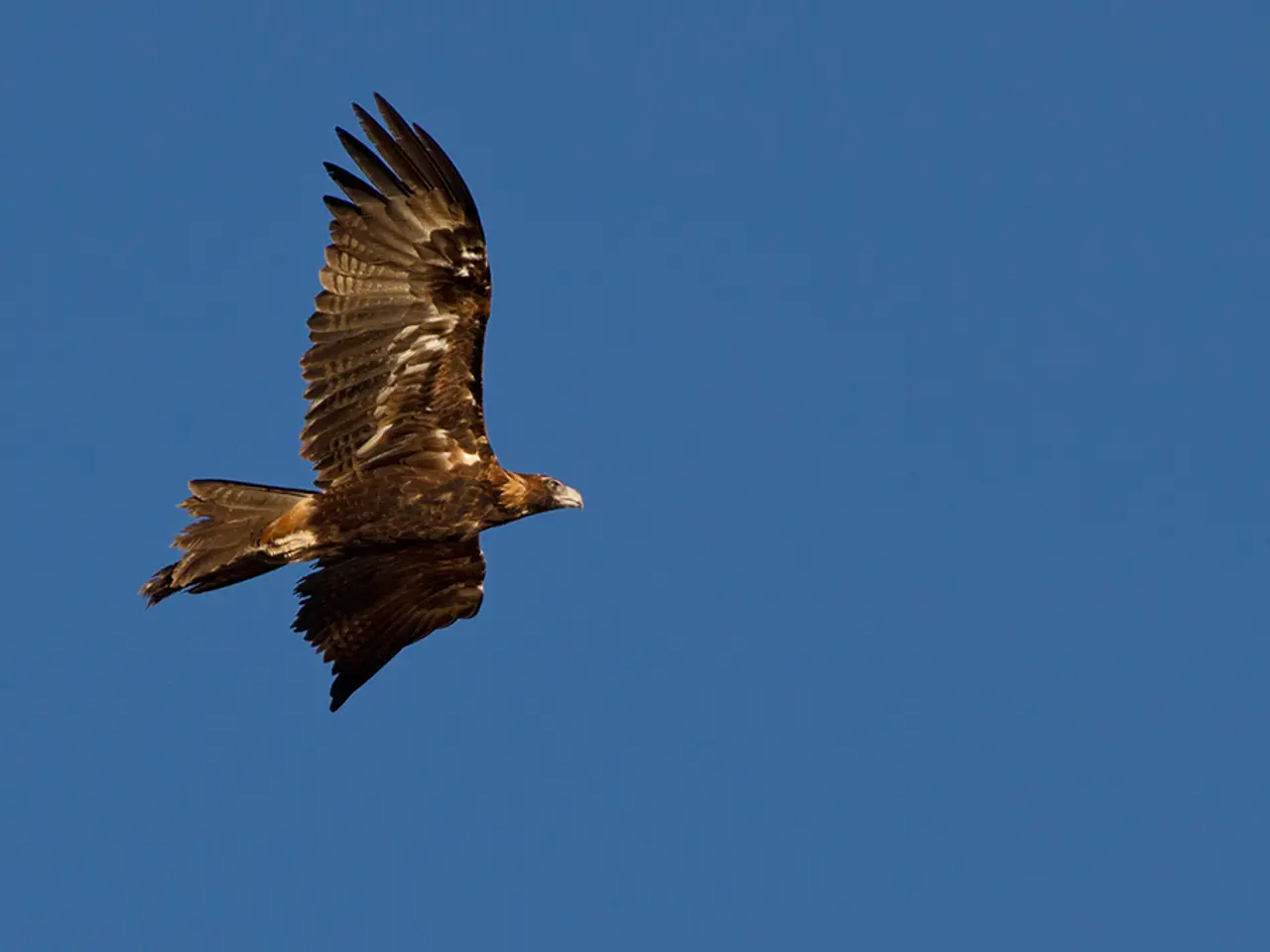Trump taking action against avian casualties, specifically focused on wind turbines
The Trump administration has taken a unique stance on bald eagle protection, tightening enforcement against wind energy projects while simultaneously weakening environmental protections for oil, gas, and other fossil fuel industries [1][3].
Interior Secretary Doug Burgum has ordered a review of permits allowing wind companies to incidentally harm eagles, suggesting possible criminal prosecutions, and ending preferential treatment for wind energy projects, including halting offshore wind leasing [1][4][5]. This move contrasts with the rollback of key parts of the Bald and Golden Eagle Protection Act, Endangered Species Act, and Migratory Bird Treaty Act that benefit fossil fuel producers, illustrating a selective and uneven enforcement of wildlife protections [1][3].
Critics argue that this approach represents a double standard, with the administration's crackdown on wind energy being more politically and personally motivated than genuinely conservation-focused [2][4]. Federal data indicate that wind turbines kill far fewer birds than other human-related causes, like oil pits, power lines, and domestic cats [1][3]. Many scientists emphasize climate change as the greater threat to bird populations, including eagles.
Despite this, the administration insists there is no conflict between protecting eagles and promoting energy development. However, Trump previously called for gutting the Bald and Golden Eagle Protection Act, a move viewed as a major victory for oil and gas companies [6]. The administration has also proposed to weaken the Endangered Species Act, which would exclude the destruction of habitat from the definition of harming imperiled plants and animals [7].
Experts believe the Trump administration is likely to lose legal challenges in its effort to crack down on wind, given that many of the same rules have been loosened for oil and gas [8]. In April, Trump signed an executive order directing agencies to sunset regulations that stem from the Bald and Golden Eagle Protection Act [9].
William Bowerman, a professor of wildlife ecology and toxicology, stated that wind turbines can have a detrimental effect on bald and golden eagles but not enough to threaten the overall population [10]. Tracy Stone-Manning, president of The Wilderness Society, stated that if the administration cared about eagles, they would create regulatory protections for them [11].
In summary, the Trump administration's policy reflects increased scrutiny and enforcement on wind energy projects for eagle deaths while weakening protections under the Bald and Golden Eagle Protection Act and related laws for fossil fuel industries, a contrast that experts say distorts the true environmental risks and selectively targets renewable energy [1][2][3].
References:
- The New York Times: Trump Administration Tightens Rules on Wind Farms and Eagles
- The Washington Post: Trump administration's eagle protection stance seen as a pretext to attack wind industry
- The Guardian: Trump administration's anti-wind energy policies threaten bald eagles, experts warn
- The Hill: Trump administration's wind turbine rule could harm eagles, critics say
- Associated Press: Trump administration moves to tighten rules on wind energy and eagles
- CNN: Trump administration proposes gutting the Bald and Golden Eagle Protection Act
- The Hill: Trump administration moves to weaken Endangered Species Act
- The Guardian: Trump's war on wind energy could be a costly mistake, experts warn
- The Washington Post: Trump signs executive order directing agencies to sunset regulations
- The New York Times: Wind Turbines Can Harm Eagles, but Not Threaten Them
- The Wilderness Society: The Trump Administration's Eagle Strategy Is a Sham
- The Trump administration's policy on bald eagle protection seems to prioritize tightening regulations for wind energy projects, while weakening protections for fossil fuel industries in the context of environmental-science, particularly the Bald and Golden Eagle Protection Act and the Endangered Species Act.
- The increased scrutiny and enforcement on wind energy projects, in comparison to the loosened regulations for oil and gas industries, raises concerns about a selective and uneven approach to wildlife protections in the field of policy-and-legislation.
- Critics argue that the administration's stance towards wind energy projects is more politically and personally motivated, as opposed to genuinely conservation-focused, given the inconsistencies within climate-change and environmental policies.
- In the realm of general-news, experts warn that the administration's policy on eagle protection distorts the true environmental risks, targeting renewable energy selectively and potentially overlooking the impact of other human-related causes on wildlife.








